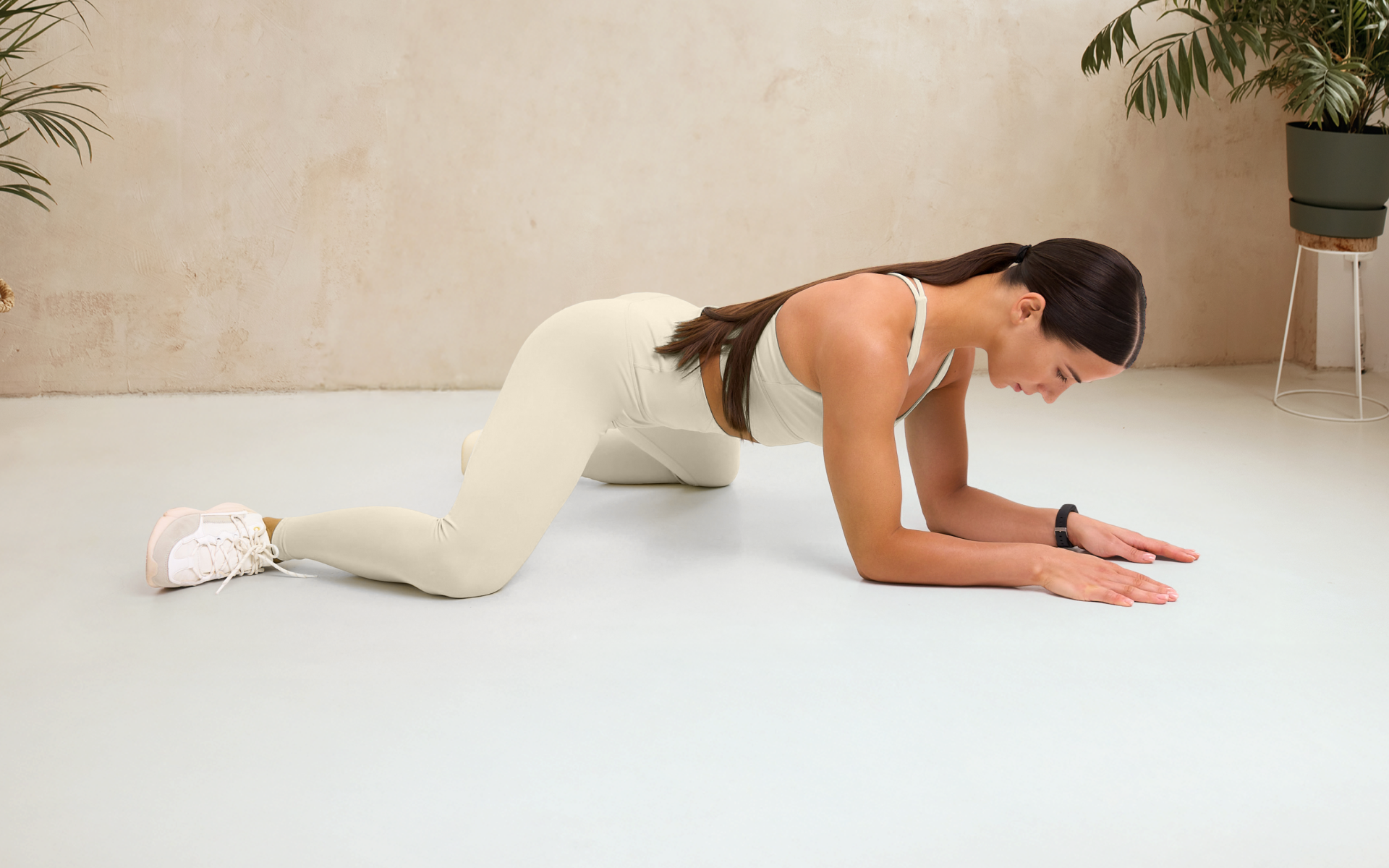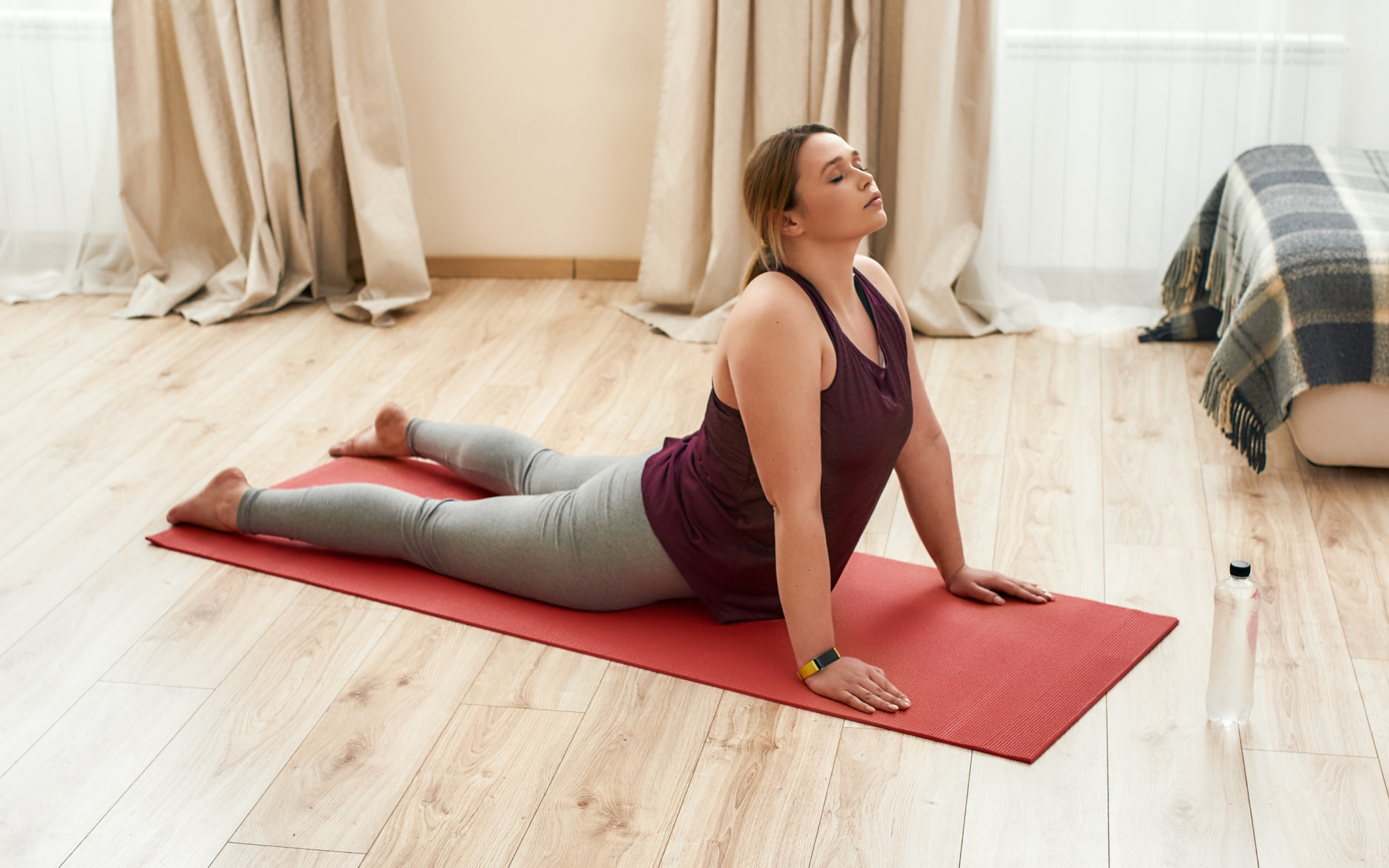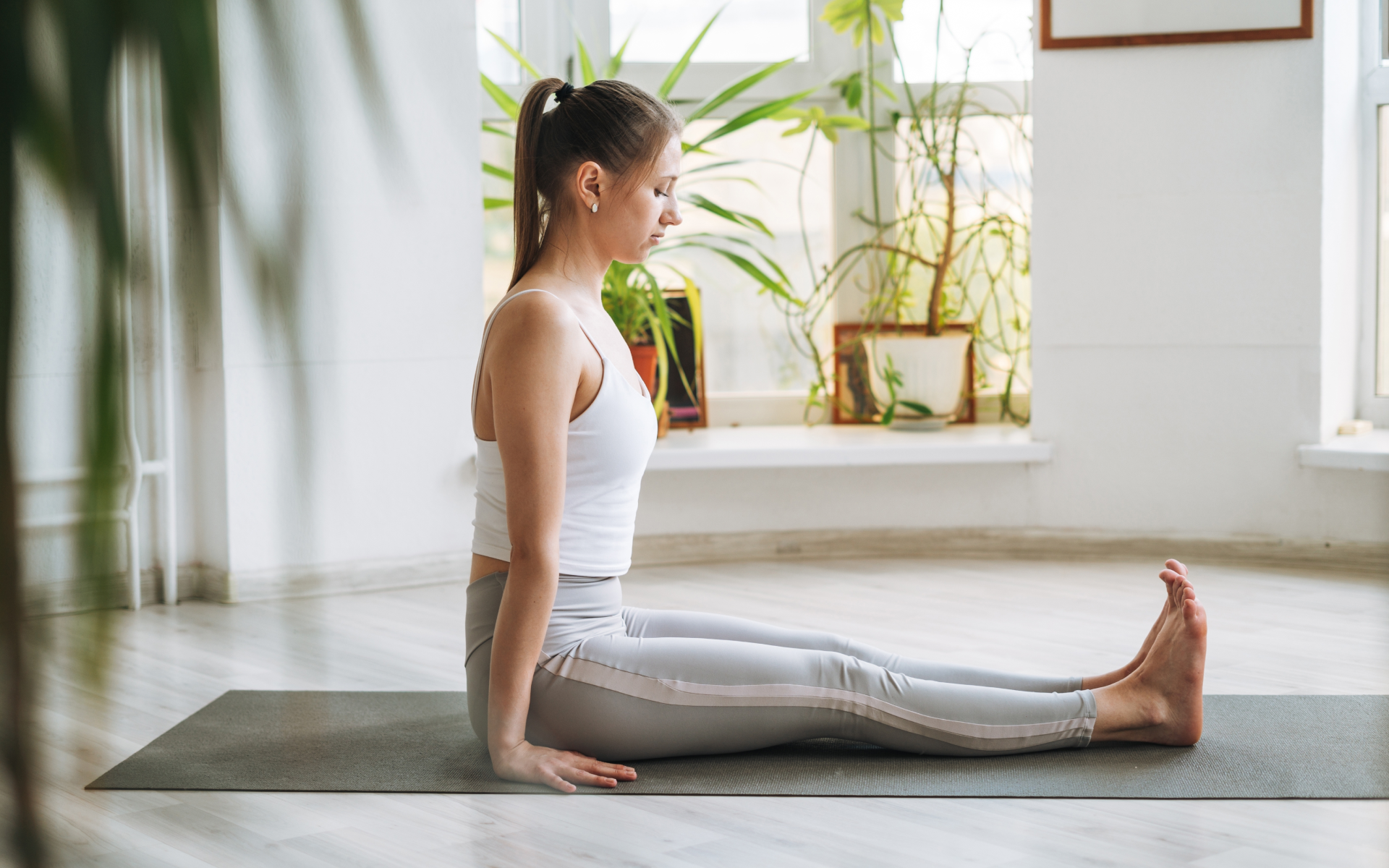Stress is chemical in nature and is often demonized, but believe it or not, it actually isn’t the enemy. It kicks in to help you fight for your life when needed. Unfortunately, when stress levels stay too high for too long, this can disrupt your sleep, sabotage your metabolism, and eventually eat away at your mental wellness.
This article breaks down what somatic exercises are, how they interact with stress, and what science says about how somatic exercises can impact calmness levels.
What Are Somatic Exercises for Calmness?
Somatic exercises are meant to be done slowly and involve movements that are mindful and they are also meant to increase awareness of sensations occurring throughout the body. When it comes to traditional workouts, the purpose is typically to burn calories or improve fitness, but somatic exercises are done with the purpose of supporting the nervous system. If you’re curious about somatic exercises for stress, check out our earlier article.
What are Some Somatic Exercises for Calmness ?
Some somatic exercises for calmness include things that encourage controlled breathing, gentle stretching, and micro-movements. These exercises also involve grounding movements and postures and activities that utilize body scanning and interoceptive tracking techniques.
These types of exercises are based on somatic therapy principles from people such as Thomas Hanna and Peter Levine, who specialize in movement. By implementing somatic exercises into your daily routine, you may be able to reduce stress patterns that are being held in your body. When stress patterns are held in the body, it can drive high cortisol levels up.
BetterMe: Health Coaching app helps you achieve your body goals with ease and efficiency by helping to choose proper meal plans and effective workouts. Start using our app and you will see good results in a short time.
Do Somatic Exercises Help to Unwind?
Emerging research has suggested that somatic exercises may help lower stress levels. Studies have shown that somatic practices such as body scanning and breathing exercises can reduce physiological stress markers. Research has also shown that breath-focused movement can significantly decrease cortisol levels (1).
The reason somatic exercises can help lower stress levels is that they help shift the body out of fight-or-flight mode and into rest-and-digest mode. This means the body moves from the sympathetic system being dominant to the parasympathetic system taking over. When you engage in somatic work, this encourages balance to be restored as the body is able to become grounded again and feel safe rather than threatened.
Read more: Somatic Activities: Meaning, Benefits, And How To Get Started
What Somatic Exercise Reduces Stress Levels?
- Somatic Breathwork: Slowing your breath, especially exhalation, can reduce stress and activate the vagus nerve. Try the 4-7-8 method or coherent breathing.
- Body Scanning: A mindfulness technique that involves mentally scanning the body for tension or sensation. Research has shown that it lowers both psychological and physiological stress (2).
- Trauma-Sensitive Yoga: A gentle yoga style that emphasizes choice and body awareness that has been shown to reduce stress levels (3).
- Feldenkrais or Hanna Somatics: These movement-based modalities reduce muscular tension and rewire neuromuscular patterns, which may impact how the body holds stress.
- Orienting and Grounding Movements: These are used in somatic experiencing and involve turning the head slowly, noticing the room, or pressing your feet into the floor.
For more details about how to lower cortisol fast, take a look at our prior publication.
What Type of Exercise Increases Stress ?
While exercise is great for you, the amount you do and the intensity at which you do it can determine how much of an impact it has on your stress level. Some types of intense exercise can actually increase your stress levels . This is particularly true when the activity is excessive or you don’t rest enough to recover between sessions.
So what types of exercise may cause increased stress levels? While high-intensity interval training (HIIT) workouts are effective for fitness, HIIT temporarily increases stress . That’s not all bad, but prolonged high levels of stress can cause problems over time. particularly for those who are already stressed.
Long sessions of cardio (e.g. running or cycling for over 90 minutes) can also significantly elevate stress levels . Something else that must be considered is that any type of exercise can increase stress if your body isn’t given time to recover, so it’s important to listen to your body and let it rest as necessary.
BetterMe will shake off your mental funk, rid you of your energy-zapping habits, and help you sculpt the body of your dreams. Intrigued? Hurry up and change your life for the better!
How Quickly Does Somatic Exercise Lower Stress?
The time it takes for somatic exercise to lower stress levels can vary greatly from one person to the next. It’s very dependent on the person and circumstances. Some people may feel the effects of somatic exercise nearly immediately.
There was a study done that showed that participants who practice 20 minutes of breath-led movement saw decreased levels of stress within 30-60 minutes after the session (4). This is because the mind responds quickly when it starts to feel safe, and breathing exercises can elicit these feelings.
Read more: 6 Somatic Yoga Exercises for Beginners
How Can I Permanently Lower My Stress ?
Unfortunately, there’s no way to permanently lower stress. This is because stress fluctuates with life changes, activity, and circumstances. The fluctuation of stress is perfectly natural and even necessary. As long as it doesn’t stay high for prolonged periods of time, it’s not something you need to focus on healthwise.
Instead of permanently lowering your cortisol, you should simply aim to keep it balanced and at your baseline. This means regularly engaging in physical activity, both somatic and otherwise, and helping your mind and body to feel safe and protected.
Somatic exercises can help you to do this as they can interrupt stress loops, improve the body-mind connection, and support sleep. If you combine somatic exercise with other stress -lowering tools such as regular sleep, magnesium-rich foods, and limited caffeine and alcohol, then keeping your cortisol levels at your baseline should be doable (5). Our previous post goes into great detail about the intermittent fasting cortisol.
Yes. If you exercise too much or too intensely, this places stress on the body, which may cause an increase in stress . On the other hand, exercising at moderate amounts and at moderate intensity doesn’t cause stress levels to rise (6). That depends. When done in moderation, HIIT may cause short-term spikes in stress levels, but those levels should return to the baseline with appropriate recovery time. However, if you’re already burnt out, adding HIIT to your routine can make it harder to return to the baseline. Frequently Asked Questions
Is too much exercise bad for stress levels?
Is HIIT bad for stress?
The Bottom Line
Somatic exercises can give your body a new way to feel safe and secure. Rather than making your body more stressed, these types of exercises encourage your body to feel grounded and comfortable and not feel like it needs to prepare to be in fight mode. Over time, somatic exercises can help support your emotional wellbeing l from the inside out.
DISCLAIMER:
This article is intended for general informational purposes only and does not serve to address individual circumstances. It is not a substitute for professional advice or help and should not be relied on for making any kind of decision-making. Any action taken as a direct or indirect result of the information in this article is entirely at your own risk and is your sole responsibility.
BetterMe, its content staff, and its medical advisors accept no responsibility for inaccuracies, errors, misstatements, inconsistencies, or omissions and specifically disclaim any liability, loss or risk, personal, professional or otherwise, which may be incurred as a consequence, directly or indirectly, of the use and/or application of any content.
You should always seek the advice of your physician or other qualified health provider with any questions you may have regarding a medical condition or your specific situation. Never disregard professional medical advice or delay seeking it because of BetterMe content. If you suspect or think you may have a medical emergency, call your doctor.
SOURCES:
- The Effect of Breathing Exercise on Stress Hormones. (2022, cyprusjmedsci.com)
- The effects of body scan meditation: A systematic review and meta-analysis (2022, iaap-journals.onlinelibrary.wiley.com)
- Trauma Sensitive Yoga as a complementary treatment for posttraumatic stress disorder: A Qualitative Descriptive analysis. (2016, pmc.ncbi.nlm.nih.gov)
- Cortisol as a marker for improvement in mindfulness-based stress reduction. (2010, sciencedirect.com)
- The effects of physical activity on cortisol and sleep: A systematic review and meta-analysis. (2022, sciencedirect.com).
- Exercise and circulating cortisol levels: the intensity threshold effect. (2008, pubmed.ncbi.nlm.nih.gov)










